Abstract Reasoning Test Samples: Angle Transformations & Direction
The Ultimate Guide to Ace Abstract Reasoning Test ( Part 3 )
In our last talk about the abstract reasoning exam, we looked at size and number patterns that often show up in these tests. Now, let's focus on two other important ideas: changing angles and understanding directions and positions.
Stay with us to learn valuable things that will help you do great in your preparation.
Angle Transformations in Abstract Reasoning Exams
What Are Angles?
Angles measure how things slant or tilt. Think of lines meeting at a point. We measure angles in degrees, like a rotation. A full circle is 360 degrees – that's a complete turn. Anything less than 360 degrees is a fraction of that whole circle.
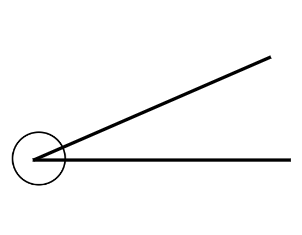
Where Angles Matter:
Shapes: Angles help shapes change. Think of a diamond turning into a kite – angles decide how shapes transform.
Direction: Picture something moving around a square's corners anticlockwise. Each corner turn is 90 degrees, starting from the North West.
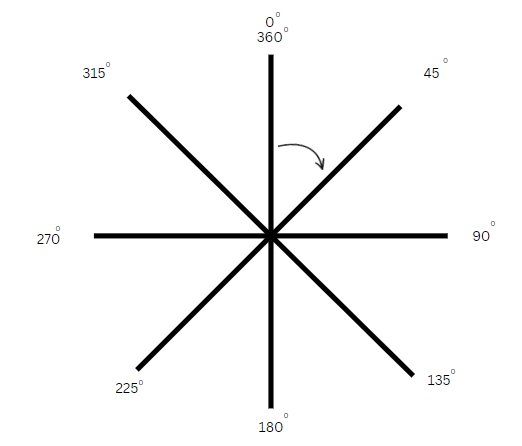
Angle Transformations: Easy Changes
Now, let's talk about angle transformations – a term for changing angles. It's not as tricky as it sounds:
Changing Angles: Imagine a shape rotating 45 degrees clockwise each time. That's an angle transformation – the degree changes with each move.
Degrees in Patterns: Angles can create patterns. Increase or decrease them by a certain amount, like 30 degrees, for neat sequences.
Fractional Tricks: Angles change what we see. Increase the angle to reveal more, or decrease it to focus on details.
Simple Rules to Remember:
Fixed Changes: Angles can increase or decrease by a specific degree, making patterns clear.
Seeing Differently: Tweaking angles changes what you see. Increase to show more, decrease to see less.
Abstract Reasoning Sample Questions: Angle Transformations
Let's take a closer look at some examples to help you grasp these concepts better.
1. In the given sequence, one figure is missing. Which of the answer options would be the most suitable to replace the question mark and complete the sequence?

Let's analyze the figure. We can see that the circle shape alternates between black and white. Therefore, the missing image should have a white circle.
As for the arrow, it moves counterclockwise from left to right, rotating 90 degrees. This means that the missing image should have an arrow pointing downwards, rotated 90 degrees.
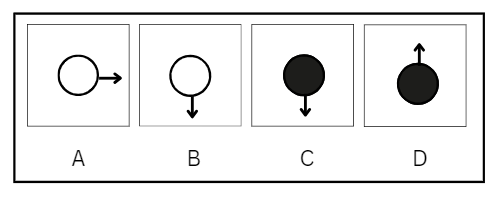
Now let's take a look at the options. Since we need a white circle, we can easily eliminate options C and D.
Option A has the arrow positioned sideways, while option B has it pointing downwards, rotated 90 degrees. Therefore, option B is the correct answer.
2. A figure is missing from the given sequence. Which of the answer choices would best fit the blank space and complete the sequence?
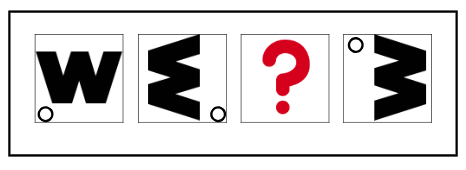
Let's analyze the sequence. In the first box, there is a big letter W in black, with a white circle in the lower left corner.
In the second box, the letter W rotates 90 degrees, and the small white circle moves 90 degrees to the right.
We can observe that the letter W continues to rotate 90 degrees in the fourth box, as it appears in a 180 degrees position. In this box, the small circle moves to the left upper corner. This movement suggests that the small circle moves in a counterclockwise direction.
Based on this analysis, we can conclude that the missing image should resemble a rotated letter M, with the small circle positioned on the upper right corner.
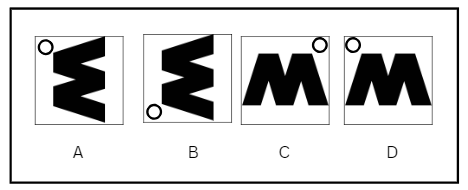
According to the pattern we established earlier, we can eliminate answer options A and B. That leaves us with options C and D, which both have an image resembling a rotated letter M.
However, based on our analysis, we determined that the missing image should have a small circle on the upper right corner. Option C satisfies this condition, making it the correct answer.
3. Which figure is different from the others in the given options?
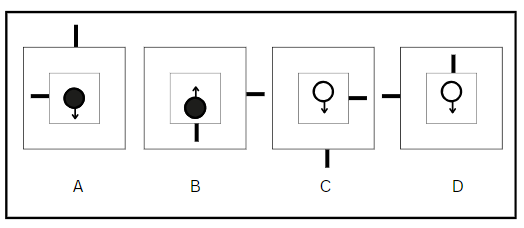
Let's take a closer look at the figures and see which one stands out from the rest.
First, we can see that all figures have a line outside the box. Additionally, all of them have a line attached to the inner box.
When examining the circles, we notice that there are two black circles and two white circles in total. Now, let's focus on the arrows. Option A has a downward arrow, Option B has an upward arrow, Option C has a downward arrow, and Option D has a downward arrow as well.
Based on this analysis, we can conclude that Option B is the odd one out because it is the only one with an upward arrow.
Direction and Positioning in Abstract Reasoning Exams
Picture abstract reasoning as a geographical map, where the understanding of direction acts as your compass. Much like a compass points to North, South, East and West, in the world of abstract reasoning, patterns emerge and rotate similarly.
These rotations, more often than not, move clockwise or anticlockwise at specific degrees—mostly at 45 or 90 degrees. Recognizing this pattern—whether it's a full 90-degree rotation or a subtle 45-degree shift—will help you decode complex abstract reasoning puzzles.
Remember:
Pattern Rotation: Does the pattern of images move clockwise or anticlockwise?
Degree of Movement: Identify the magnitude of movement. Is an image rotating by a quarter (90 degrees) or just making a slight turn (45 degrees)?
Positioning in abstract reasoning is like a strategic game of chess. Each piece (or, in this case, image) has a specific spot on the board and the position often holds the key to the whole game.
In an abstract test pattern, an image or a shape might change position—sometimes it's near a corner, other times close to another image, or quite possibly, next to the opposite corner. Understanding these positional changes helps you answer abstract reasoning tests.
Consider:
Location: Where is the image located? Is it nearer to the corner or the edge?
Comparison: How are images positioned in relation to other components in the pattern? Is it next to a larger or smaller object? What's the color of the adjacent image—white, black or grey?
Abstract Reasoning Test Example with Answer
1. What shape follows in the sequence?
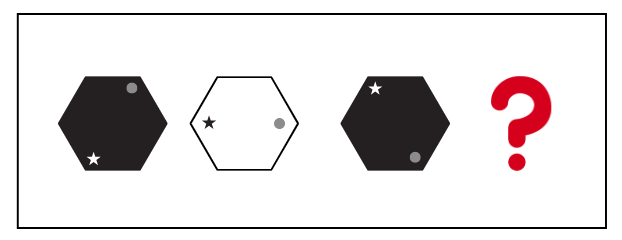
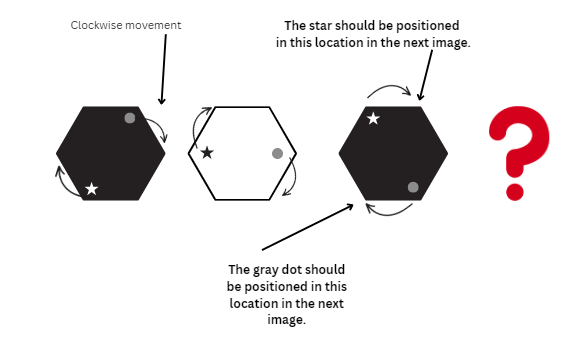
The pattern shows that both the star and the gray dot take steps to the right, moving in a clockwise direction. Meanwhile, the hexagon keeps alternating between being black and white. By understanding this pattern, we can make a smart guess about where the gray dot and stars will be next time. Seeing how the hexagon is switching colors, we can anticipate that the next one will be white.
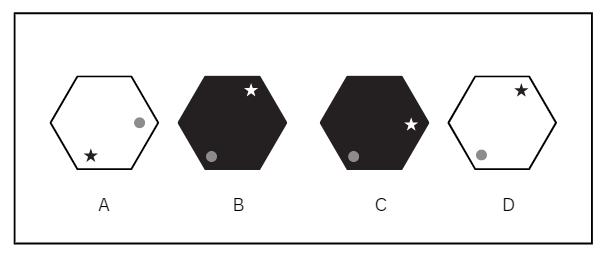
After looking at the pattern, it's clear that option D follows the same pattern. So, we can say with certainty that option D is the right answer.
2. Which shape completes the sequence?
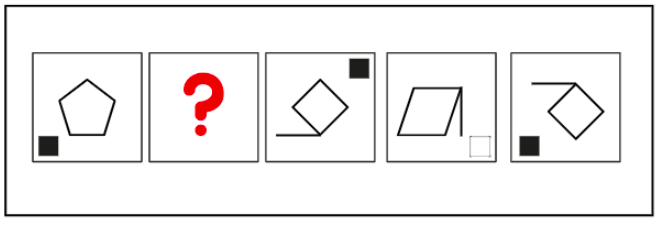

The small square moves around in a clockwise direction. At the same time, it switches or alternates colors, changing from black to white. So, in the missing picture, we can expect the small square to be white and positioned 90 degrees to the right in a clockwise direction. The larger shapes always seem to have five sides.
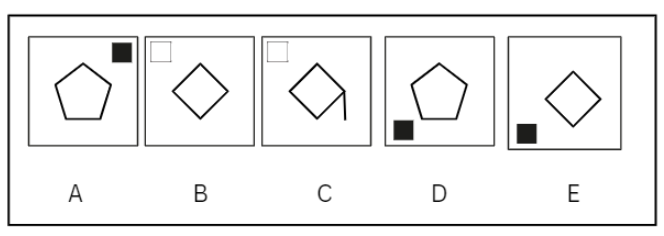
Upon examining the choices, we can see that both Option B and C have a small white box that has moved 90 degrees clockwise. This helps us eliminate Options A, D and E. After counting the number of sides, we find that the shape in Option C has five sides, which aligns with our observed pattern. So, the answer we're looking for is Option C.
3. Which shape should come next in the sequence?
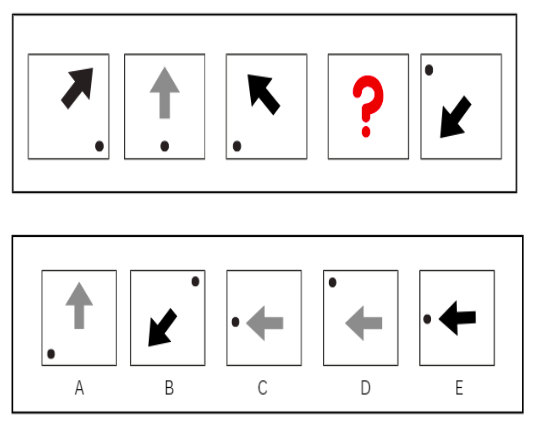
The arrows are turning counterclockwise and their color is changing between black and gray. So, the missing shape must have a gray arrow. This means options B and E aren't correct.
The black dot inside is moving in the clockwise direction. So, with these patterns observed, the shape that should come next is choice C!
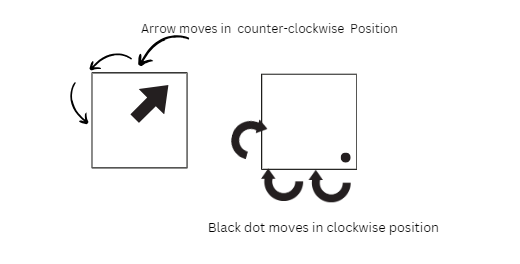
Final Words
Becoming skilled in abstract reasoning is crucial for performing well in selective school exams. Although it might feel challenging initially, by preparing well, practicing and using a smart plan, you can succeed in this area.
Keep in mind that your goal is to spot the patterns that are already there, rather than creating new ones.
At Titan College, we provide Practice Tests that are designed to enhance your performance in Abstract Reasoning Exams. Feel free to explore them and reach out if you have any questions.
We're here to help!
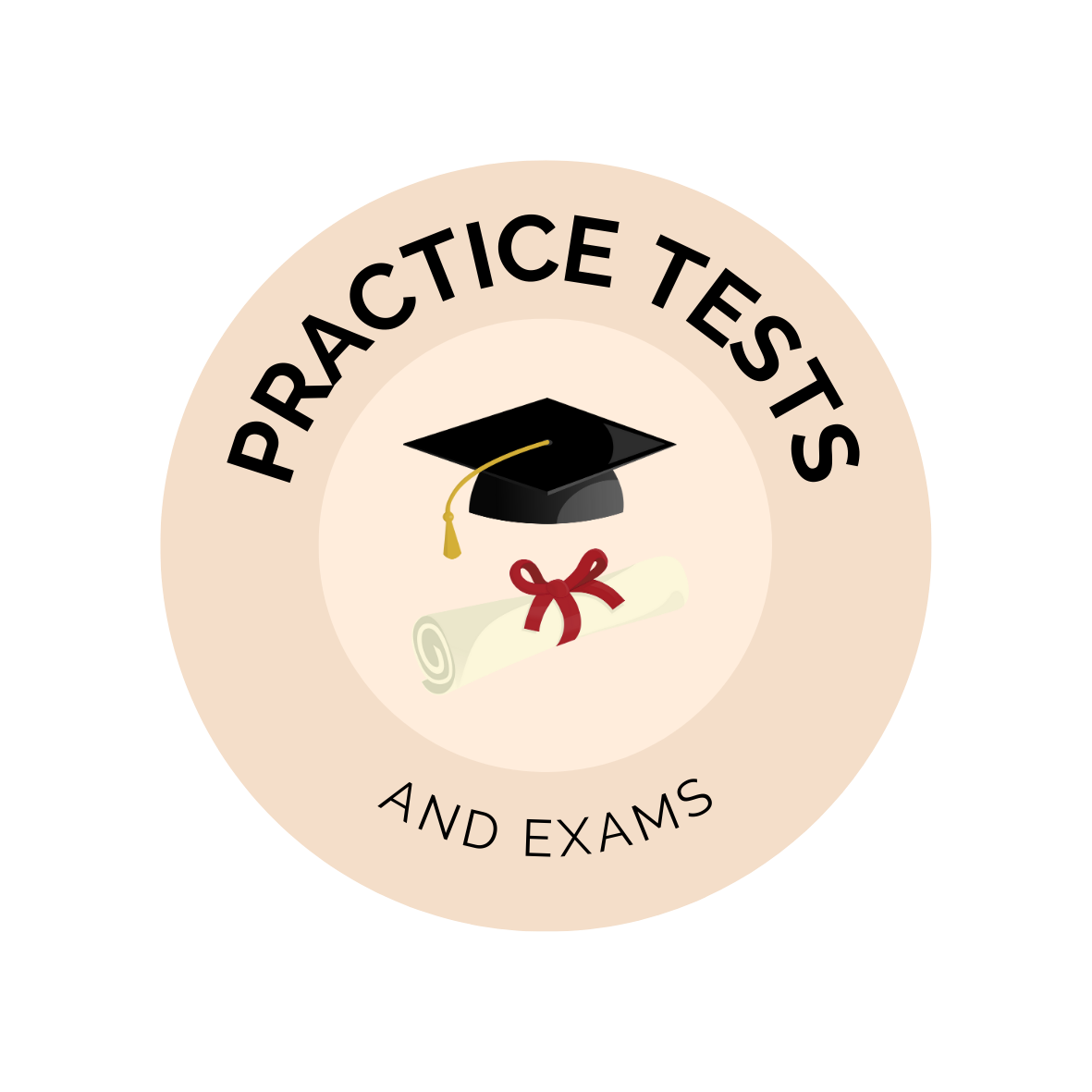


0 comments